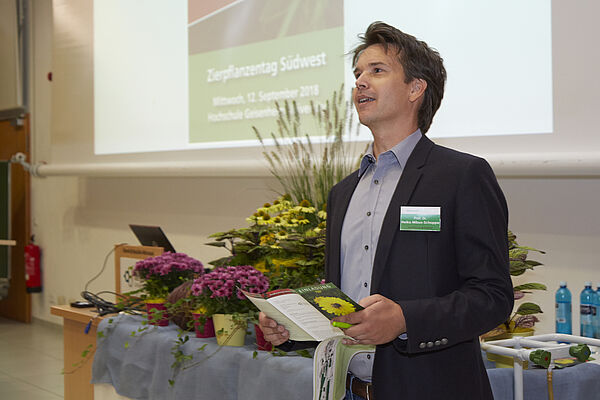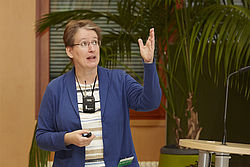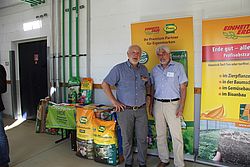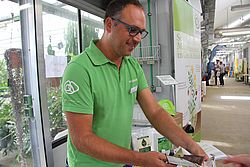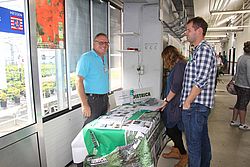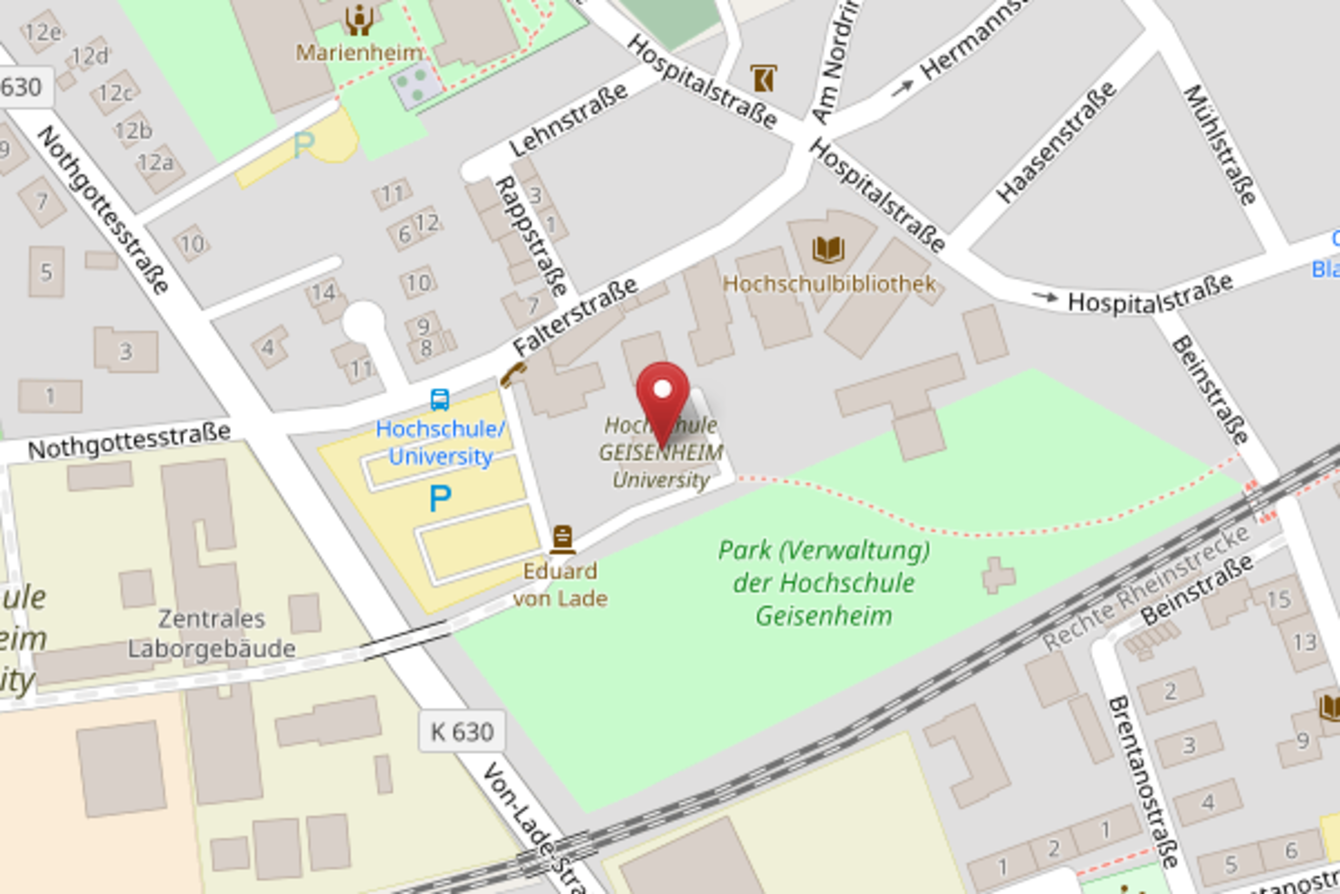Plant protection is one of the central topics in ornamental plant cultivation. Our products have to be perfect, unblemished and healthy and we cannot tolerate leaf damage and other damages. At the same time, we sell the products intact and in full bloom, therefore we also have to keep in mind that the “Blütenbesucher” need to be protected too. Bed and balcony plants are important for bees, and customers are aware of that fact. At the “Landesgartenschau” (horticultural show) 2018 in Bad Schwalbach visitors frequently asked for advice on how to help bees living in their gardens.
Also on this year’s agenda was a speech by PD Dr. Gaby Böl from the German Federal Institute for Risk Assessment (BfR). Böl talked about “subjective and objective risks of pesticides” and impressed visitors with her expertise. In the university’s greenhouse building, plenty of exhibitors had their products on display. Visitors could see for themselves what is new on the market, talk to companies and institutions and gain insight into current research projects of the Department of Urban Gardening and Plant Use.
Once again this year’s symposium took place in Geisenheim. Neustadt/W and Geisenheim organize the symposium together with DLR Rheinpfalz” (service center for rural areas in Rhineland-Palatinate), Gartenbauverband Baden-Württemberg-Hessen (horticultural association Baden-Wurttemberg-Hesse), national associations of Rhineland-Palatinate and the Saarland, Landesbetrieb Landwirtschaft Hessen (agricultural association Hesse) and Geisenheim’s and Neustadt’s alumni organizations (VEG-Geisenheim Alumni Association e.V.)


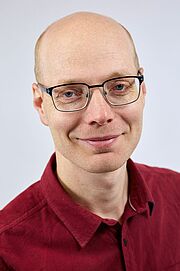

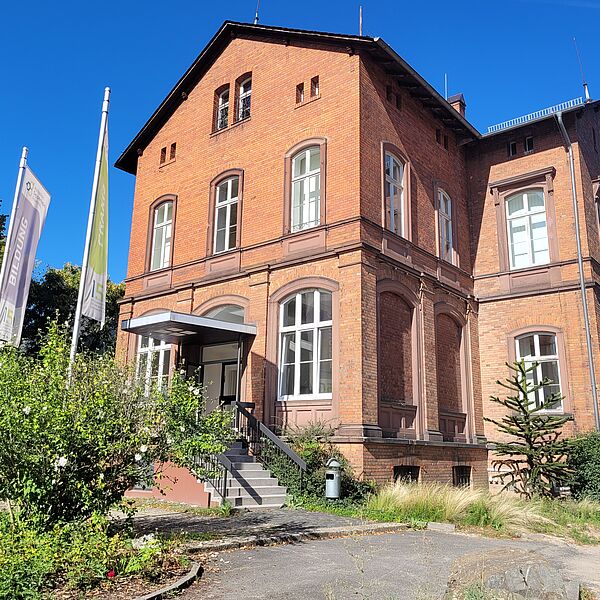
![to campus south;; M. Faust 2023 [Translate to English:] Bild Unter Campus](/fileadmin/_processed_/6/9/csm_MF_HEADER_UNTERERCAMPUS_b3323b9354.jpg)
